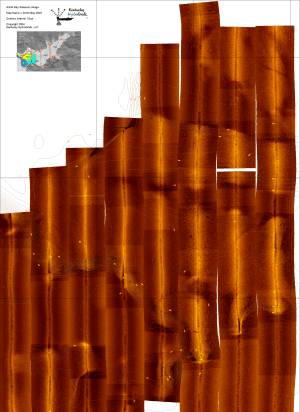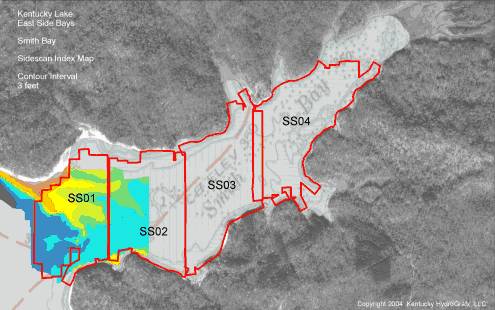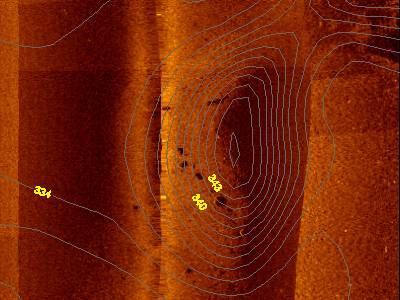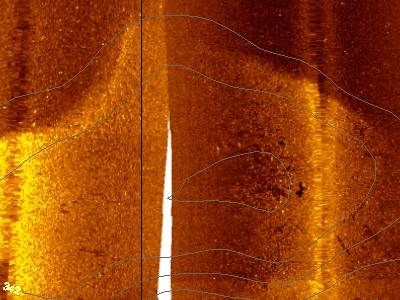
This is a zoomed out image of one sidescan section for Smith Bay. While the image detail is not useful at this range, all the structure secrets become readily apparent at the optimum zoom range. See below for a few examples.
This is called a "sidescan mosaic" which represents multiple sidescan passes parallel to each other. While every effort is made to make the nicest image possible, sidescan imagery contains a few artifacts that cannot be avoided.
A special sidescan image is provided on disk that includes examples of typical objects and terrain features found in the lakes.
Once you get oriented to some of the most unique lake terrain imagery, you could actually become an experienced sidescan interpreter.



